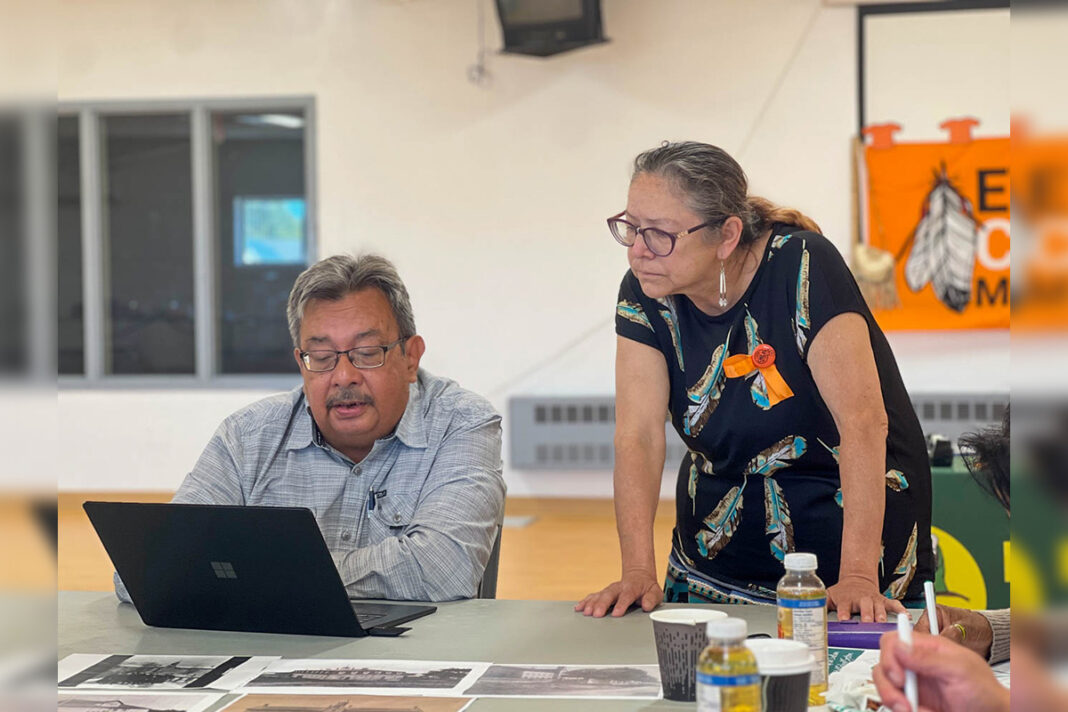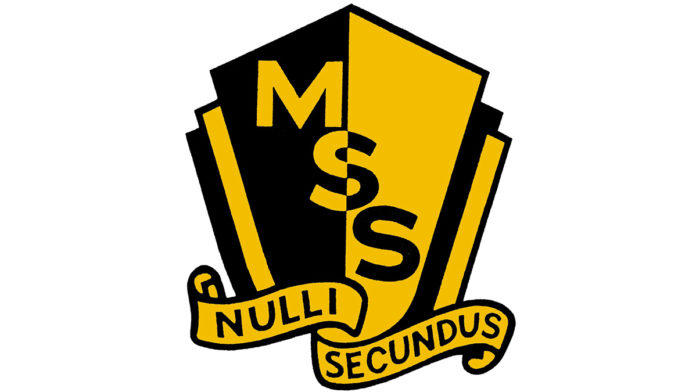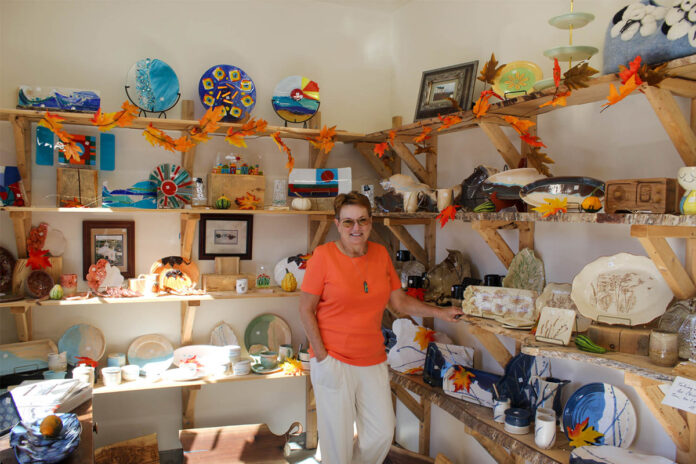WIIKWEMKOONG—In the heart of Wiikwemkoong Unceded Territory, a deeply moving week of events brought the spirit of “Every Child Matters” to life. While the official National Day for Truth and Reconciliation is marked on September 30, Wiikwemkoong extended this crucial reflection across an entire week, underscoring that for Indigenous communities, the fight for justice, remembrance and healing is ongoing. Chief Tim Ominka’s words rang clear: “For us, Every Child Matters is not just one day—it is every day.” This commitment was evident in the carefully curated presentations, workshops, and educational programs that honoured the history of Indigenous peoples and their resilience in the face of colonization.
The week began against the backdrop of the Robinson-Huron Treaty settlement, a landmark victory that reaffirmed the rights of the Anishinaabe people. The timing of the events felt significant, highlighting the enduring relevance of treaty rights and the broader movement toward reconciliation and land reclamation. Each day of the week-long commemoration built upon this theme, offering a space for the community to gather, share stories and engage in transformative education.
A Story of Survival and Resilience: Steven George’s Opening Presentation
The week kicked off on Monday, September 23, with a powerful presentation by Steven George, a community historian, genealogist and language carrier with the Wiikwemkoong Heritage Organization. His work focuses on the preservation of oral histories and cultural knowledge, much of which he learned from his elders. Mr. George’s presentation was a tribute to the tradition of storytelling that has kept the spirit of the Anishinaabe people alive through generations.
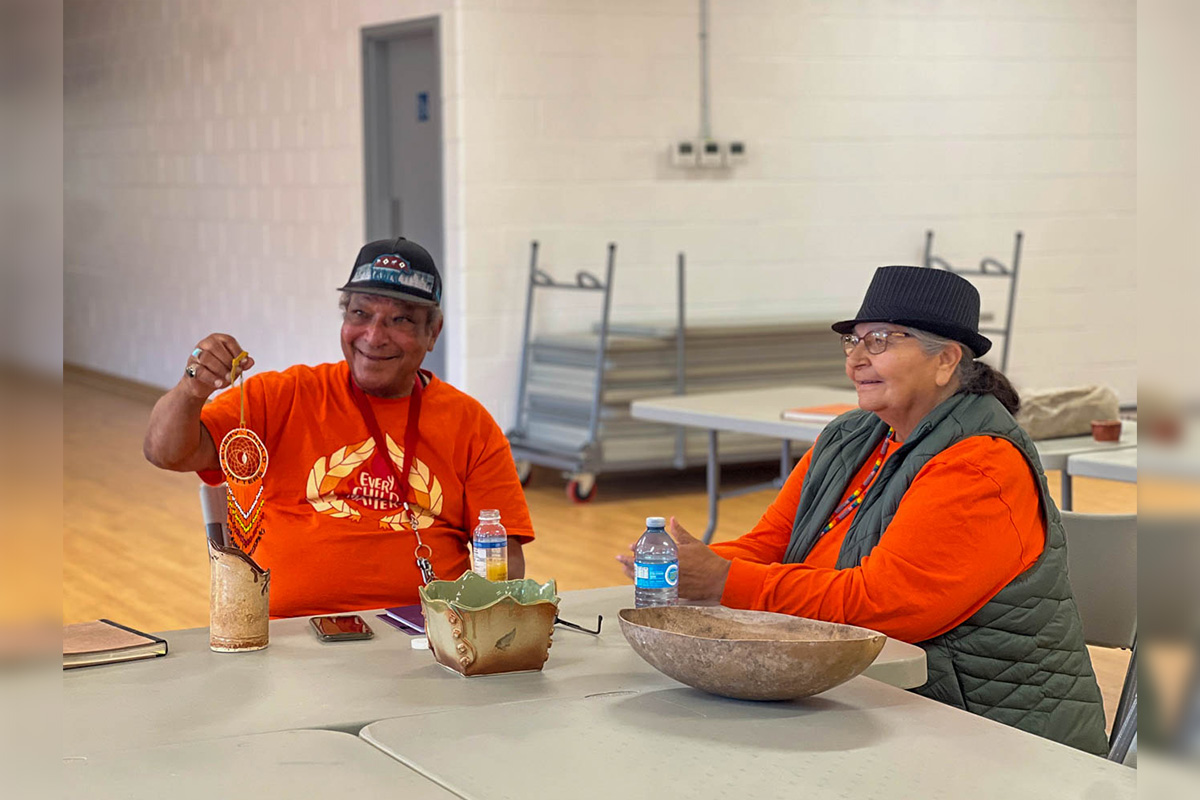
Standing before a packed room, Mr. George spoke largely in Anishinaabemowin, his first language, offering English translations for those unfamiliar with the language. His use of Anishinaabemowin was a powerful reminder of the importance of language in preserving cultural identity—a central theme in the fight for Indigenous rights. “My ability to speak Anishinaabemowin,” he shared, “comes from sitting with my elders and listening to their stories. The knowledge they passed down was not just about our history, but about who we are as a people.”
His presentation featured rare archival photographs and records that he had personally sourced from the Algoma University archives. These images offered a window into a dark chapter of Canada’s history—residential schools. Shingwauk Hall, a prominent building on Algoma University’s campus, was once a residential school for First Nations children. It operated from 1873 until 1970, and its legacy is one of both trauma and survival.
“When I first started looking through these archives, it was painful,” he admitted. “But it’s important that we face this history. For too long, our stories were told by others, often by those who viewed us as ‘savages.’ But when we tell our own stories, the narrative changes.”

Mr. George’s commitment to reclaiming Indigenous history started at a young age. As a teenager, he became fascinated by old family photographs that his mother had carefully preserved. These photos became his first connection to his ancestors, and as he grew older, his interest in genealogy blossomed. “My mother had photos of our family going back generations—grandparents, great-grandparents and beyond. But some of these photos didn’t have names attached, and I realized that if I didn’t start asking questions, the stories behind those faces would be lost forever.”
This passion for uncovering the past took him to Laurentian University, where he studied law. But his heart always remained with his community’s history. Mr. George’s dedication to uncovering and preserving the history of his people extends beyond formal archives. It started with family photographs and stories passed down through generations, a personal passion he pursued even while studying law at Laurentian University. “I was told learning Anishinaabemowin was useless in the modern world,” he shared. “But I never believed that. Speaking two languages has only strengthened my intellect and memory.”
In his presentation, Mr. George highlighted the importance of oral traditions in maintaining a fuller picture of history—one that goes beyond the written accounts of colonial historians. “When we rely only on written records, we get a one-sided view of the past,” he explained. “But through oral stories, we can hear the voices of those who actually lived through these experiences. Our ancestors passed down their knowledge in a way that was accurate and meaningful. That’s why it’s so important for our young people to learn both our language and our history—they go hand in hand.”
Challenges of Colonial Record-
Keeping and the Power of
Oral Tradition
As Mr. George described the process of researching his family and community history, he emphasized the difficulties of navigating colonial record-keeping. “The records kept by settlers and missionaries are often incomplete or biased. They don’t capture the full picture of who we are,” he said. “Our oral traditions, on the other hand, offer a more complete and truthful account. I’ve spoken with people who are the grandchildren of those who signed the treaties, and the stories they’ve inherited from their ancestors provide details that are missing from the official records.”
He recounted one such story about the signing of the 1862 Robinson-Huron Treaty. “There were over 1,500 Anishinaabe present at the negotiations,” he shared. “But when you read the settler accounts, they don’t convey the intent and worldview of our ancestors. It’s as if we were just a footnote in our own history. That’s why we must tell our stories, in our own words, and in our own language.”
The presentation was a blend of historical documentation and personal testimony, calling upon young people to continue learning the language and stories of their ancestors. Mr. George stressed the importance of reclaiming Indigenous narratives and challenging the colonial record-keeping that often distorted Indigenous histories. “Our way of telling history is just as accurate, if not more, than a written record,” he said.
Cultural Preservation through Clay:
A presentation with Jose Garcia
Following Steven George’s presentation, participants were treated to a roundtable discussion and presentation led by Jose Garcia, a Taìno potter and artist who has lived and worked in Wiikwemkoong for over 40 years. Mr. Garcia, who was exiled from the Dominican Republic during the dictatorship of Rafael Trujillo, has dedicated his life to preserving traditional pottery techniques and sharing them with the community.
Mr. Garcia’s workshop was not just a lesson in art but a journey through history. He spoke about the sophisticated societies of the Taìno people before the arrival of Christopher Columbus, describing how his ancestors had developed advanced irrigation systems and produced beautiful hand-dyed textiles and pottery. “When Columbus got lost at sea and landed in the Dominican Republic, my people were thriving with advanced irrigation systems, pottery, and textiles,” he recounted. “There were four, five ‘caciques’, chiefdoms, five chiefdoms. There were three women and two men (chiefs) and the women fought the Spanish fiercely.”
Mr. Garcia’s pottery practices are deeply rooted in tradition, but he also embraces new techniques, using both traditional earth kilns and modern propane-fired kilns in his work.
“Working with clay is where we are born,” he reflected, smiling as he described the focus required for the craft. “Sometimes, the creation comes from somewhere beyond us,” he added, gesturing skyward.
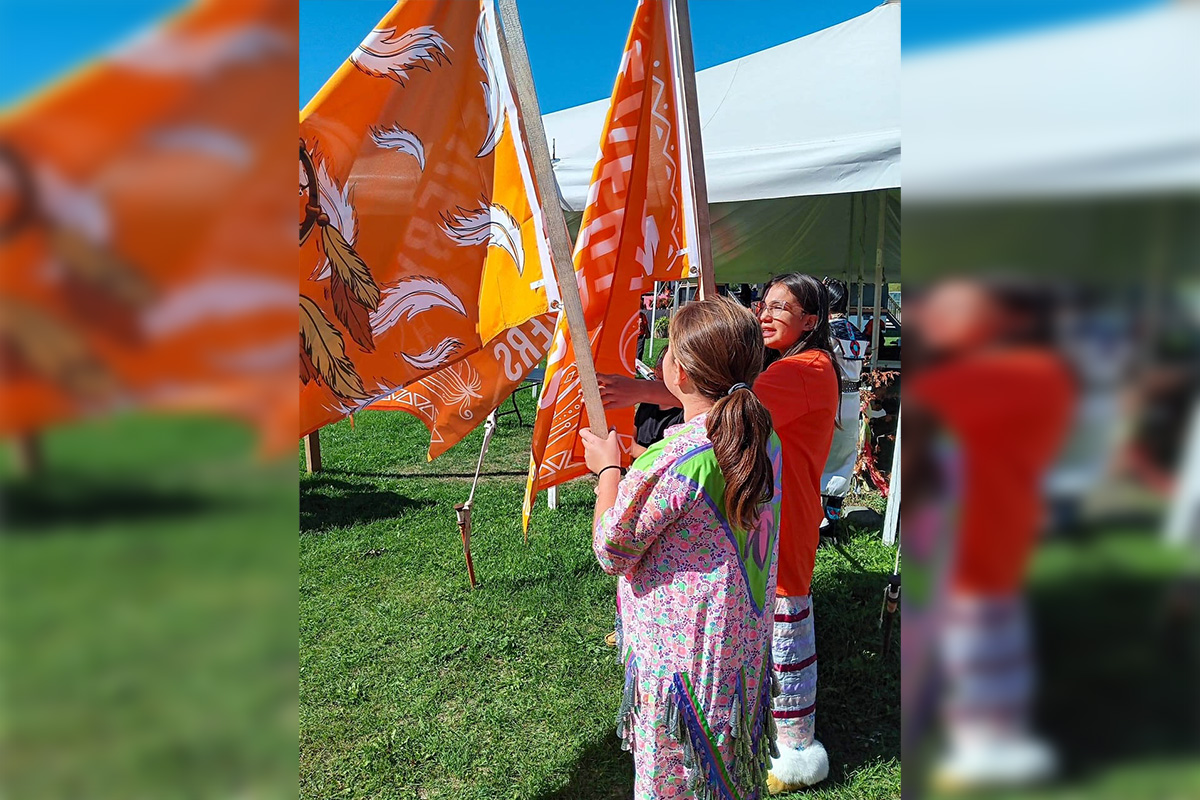
Throughout the workshop, Mr. Garcia spoke about various pottery techniques, including Dominican, Navajo, Anishnaabe and Japanese styles. He emphasized the universality of clay work, noting that almost every culture around the world has a tradition of pottery. “Working with clay connects us to the earth,” he explained. “It’s a tradition that has been passed down through generations, and it requires focus, patience, and respect.”
One of the highlights of the presentation was the description of traditional clay pieces using an earth kiln—a method that Mr. Garcia teaches as a way to connect students with the land. “We dig the kilns right into the ground, just like our ancestors did. The earth holds the heat, and the fire brings the clay to life. It’s a powerful experience, but you have to be careful—if you rush the process, the clay can explode.”
Mr. Garcia’s teaching goes beyond the technical aspects of pottery. He views the practice as a form of spiritual connection. “When we work with clay, we’re not just creating objects—we’re tapping into something much deeper. Sometimes the creation doesn’t come from us—it comes from somewhere beyond us.”
Mr. Garcia was presented with a beaded dreamcatcher by Barbara Peltier, Prevention Services Program Manager, for his contribution to the day.
A Community United in
Remembrance and Healing
Throughout the week, Wiikwemkoong’s “Every Child Matters” events brought together a wide range of voices, from historians and artists to elders and community leaders. Each day was an opportunity to reflect on the past, honour those who suffered under colonial oppression, and build a stronger future for the next generation.
Workshops, healing circles, and cultural teachings filled the days, creating a space for both education and emotional processing. The stories shared during the week served as a powerful reminder of the resilience of Indigenous peoples and the importance of reclaiming cultural traditions.
For Wiikwemkoong, the National Day for Truth and Reconciliation is not just a date on the calendar—it is a living practice, woven into the everyday lives of its people. As Chief Ominika so powerfully stated, “Every Child Matters” is not a slogan, but a guiding principle that calls on all Canadians to engage in the work of truth, justice and healing.


